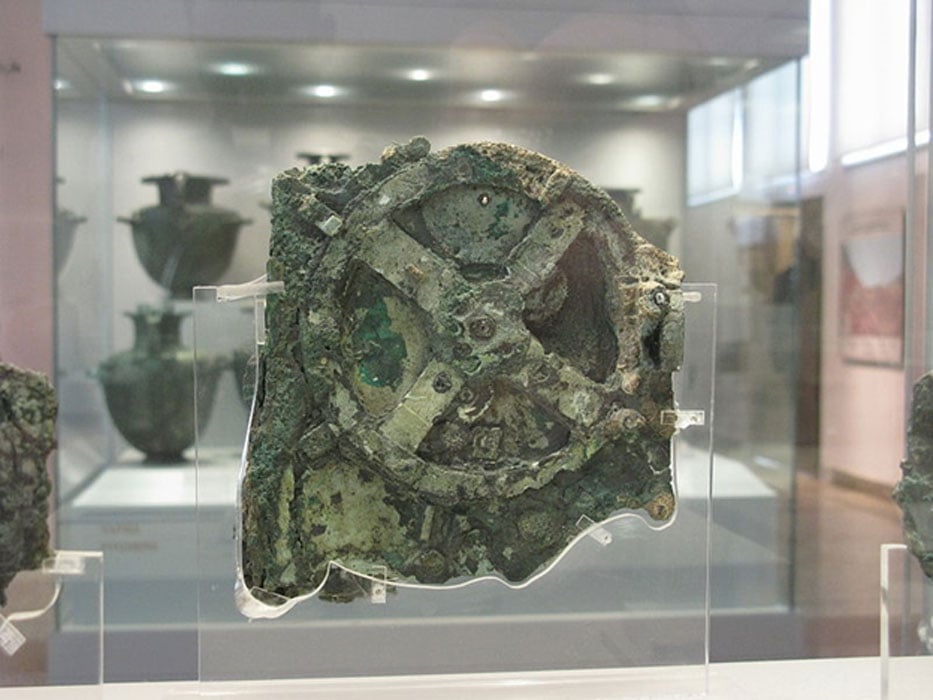115 Years Since Sensational Discovery of The World’s First Analogue Computer
Every time ancient Greece is mentioned most people automatically think of democracy, the Olympic Games, mythology and philosophy. It seems that not many are aware of how advanced the ancient Greeks were on a technological level as well and the Antikythera Mechanism, known as the world’s first analog computer, is the brightest example of all.
Google Commemorates the Discovery of the World’s First Computer
On May 17 of 1902, when Greek archaeologist Valerios Stais was discovering a corroded chunk of metal, he was making history by finding part of what some historians describe as the world's first analog computer in history; the Antikythera Mechanism. Although the term “analog computer” might be an exaggeration to some, it is an undeniable fact that the Antikythera mechanism that was recovered from the Antikythera wreck (a shipwreck off the Greek island of Antikythera) is the earliest preserved portable astronomical calculator in history, from what we know at this point in time.
In honor of the discovery, the Google Doodle yesterday commemorated the 115th anniversary of the find, highlighting "how a rusty remnant can open up a skyful of knowledge and inspiration,” as Express UK characteristically reports.
- What the world’s oldest calculator tells us about the Ancient Greeks' view of the Universe
- The Antikythera Shipwreck – The Titanic of the Ancient World and its Sunken Historic Treasure
- The Antikythera mechanism

The amazing Antikythera Mechanism found in a shipwreck off the island of Antikythera in Greece. Credit: Tilemahos Efthimiadis / flickr
An Introduction to the Antikythera Mechanism
As April Holloway reports in a previous Ancient Origins article, the Antikythera mechanism is one of the most amazing mechanical devices discovered from the ancient world. The ancient device was recovered on May 17 of 1902, from the Antikythera shipwreck off the Greek island of Antikythera, which in antiquity was known as Aigila. It is a metallic device which consists of a complex combination of gears, and dates back to the 1 st or 2 nd century BC.
X-rays have shown that there are at least 30 different types of gears used in the device, and on the mechanism’s door plates are about 2,000 letters that are considered to be something like a usage manual.

This is an SVG version of the schematic for the Antikythera mechanism with labelled shafts and gears. (CC0)
The amazing device, which some believe was inspired by the famous inventor and mathematician Archimedes, is so complex that many consider the Antikythera mechanism to be the first analogue computer. Derek de Solla Price, who analyzed it in the 1960s, said the discovery was like finding an internal combustion engine in Tutankhamen’s tomb.
- New analysis of Antikythera Mechanism reveals clues to one of history’s greatest puzzles
- Unraveling the Mystery of the Ancient Olbia Gearwheel
- Decoding the Heavens: A 2,000-Year-Old Computer--and the Century-long Search to Discover Its Secrets
For all the enquiring minds, Peter Lynch, professor of meteorology at University College Dublin, has now explained what this machine was for and exactly how it worked.

Fragment of the Antikythera Mechanism with image (CC BY-NC 2.0)
Professor Lynch writes: “The mechanism was driven by a handle that turned a linked system of more than 30 gear wheels. Using modern imaging techniques, it is possible to count the teeth on the wheels, see which cog meshes with which and what are the gear ratios. These ratios enable us to figure out what the mechanism was computing.
The gears were coupled to pointers on the front and back of the mechanism, showing the positions of the sun, moon and planets as they moved through the zodiac. An extendable arm with a pin followed a spiral groove, like a record player stylus. A small sphere, half white and half black, indicated the phase of the moon.
Even more impressive was the prediction of solar and lunar eclipses. It was known to the Babylonians that if a lunar eclipse is observed, a similar event occurs 223 full moons later. This period of about 19 years is known as the Saros cycle. It required complex mathematical reasoning and technology to implement the cycle in the mechanism.”
Amazingly, the device even included a dial to indicate which of the Pan-Hellenic games would take place each year, with the Olympics occurring every fourth year.

Modern model of the Antikythera Mechanism (CC BY-SA 3.0)
A Lasting Legacy of the Ancient Greek Technology
Ultimately, the Antikythera mechanism illustrates in the best possible way that the ancient Greeks used complex devices of precisely cut wheels to represent the latest in scientific understanding. It’s also a door into how the ancient Greeks saw the universe. They believed that nature worked according to predefined rules, like a machine, an approach that went on shaping the foundations of our contemporary scientific views.
And while some modern scientists might argue that this type of mechanical philosophy would develop drastically only after the Industrial Revolution, in reality it was the ancient mechanics – just like the Antikythera Mechanism – that paved the way and inspired pretty much every modern technological “miracle” of our times.
Top Image: The Antikythera Mechanism, National Archaeological Museum, Athens, Greece. (CC BY 2.0)




















Comments
Skills? Absolutely Machines? Not necessarily. My beginning metal working courses all required making precision metal articles by hand – using only hand tools. I don’t know if they still teach such in colleges any more, but they should. Machines make it a lot easier, but it can be done by hand.
You are assuming that there has been only one progression to modern technology by humans on this planet.
Now the question is: where are the lathes, shapers, mills and divider heads necessary for such precision? Plus, what was the motive power used to make such machines function? This is non-trivial as fabrication of such a mechanism today would require a very high level skill set and precise machinery.